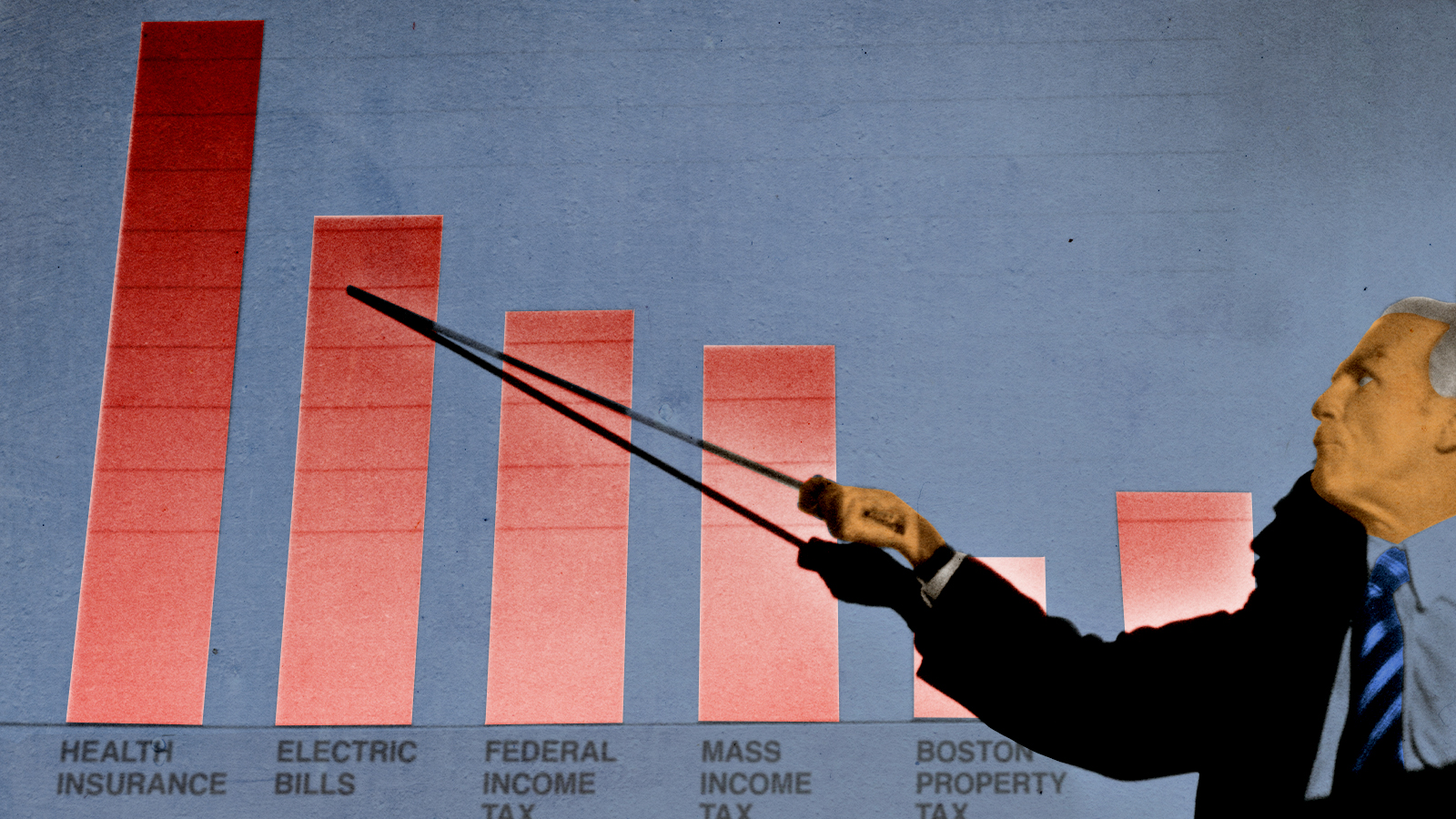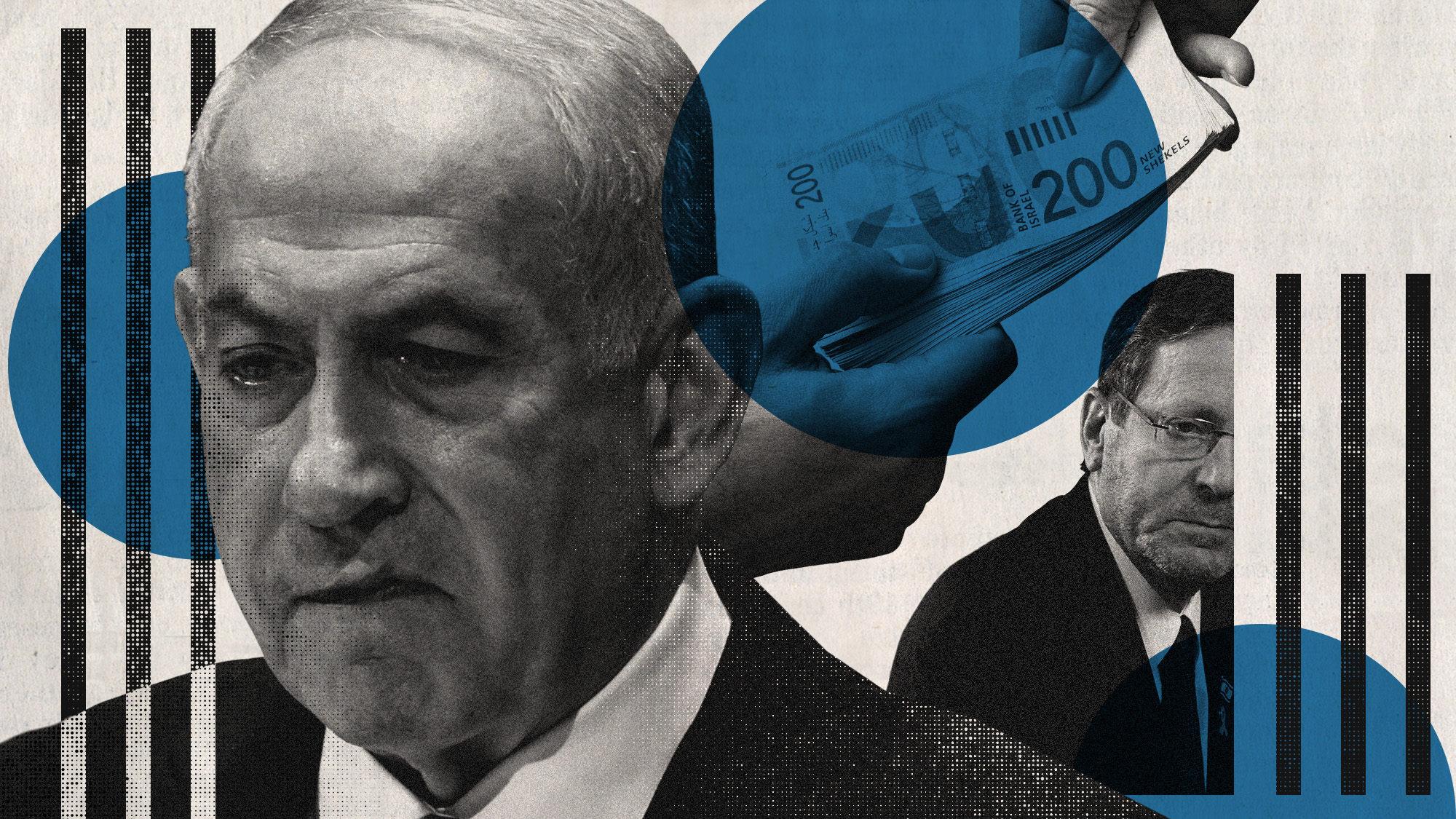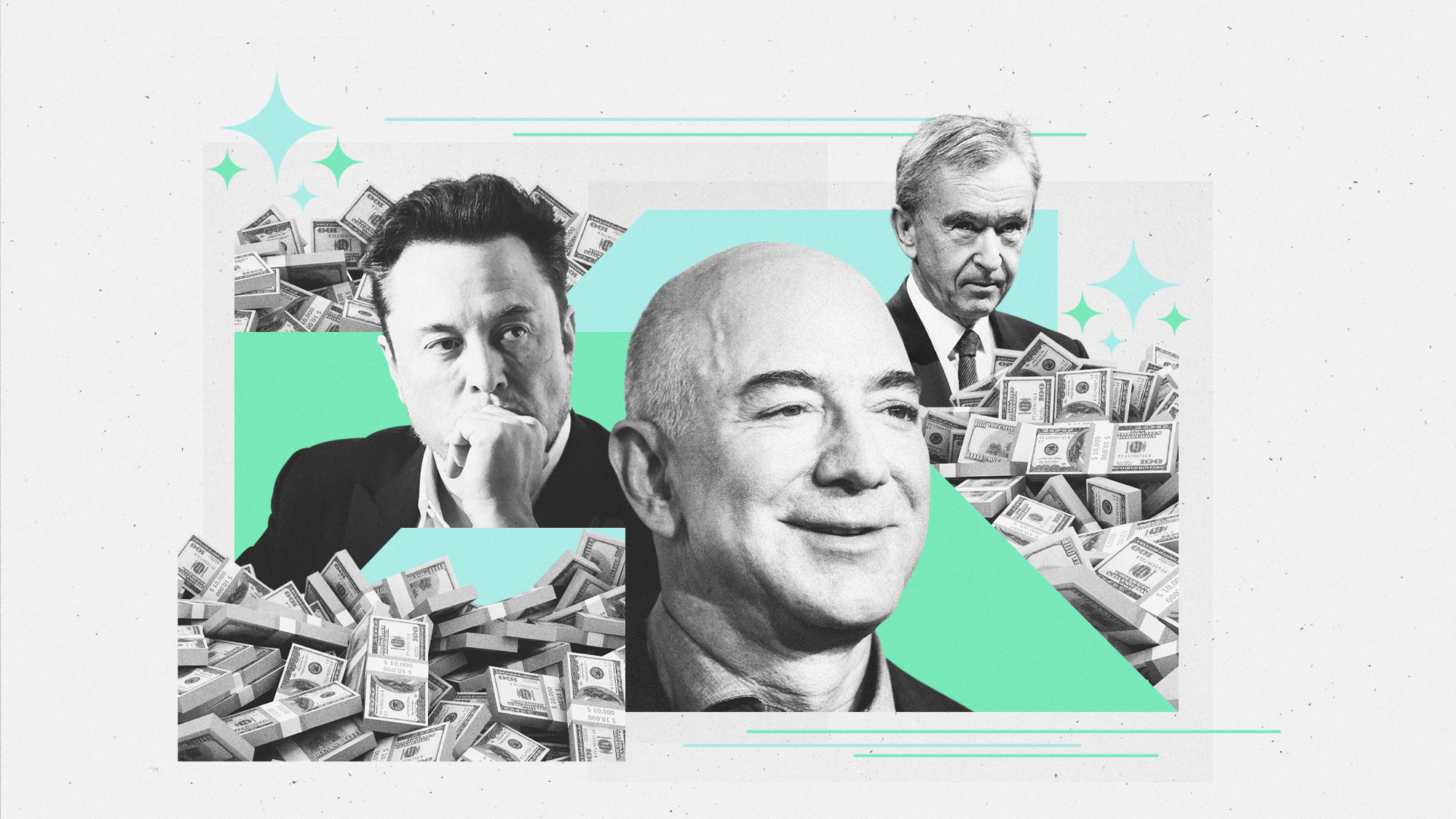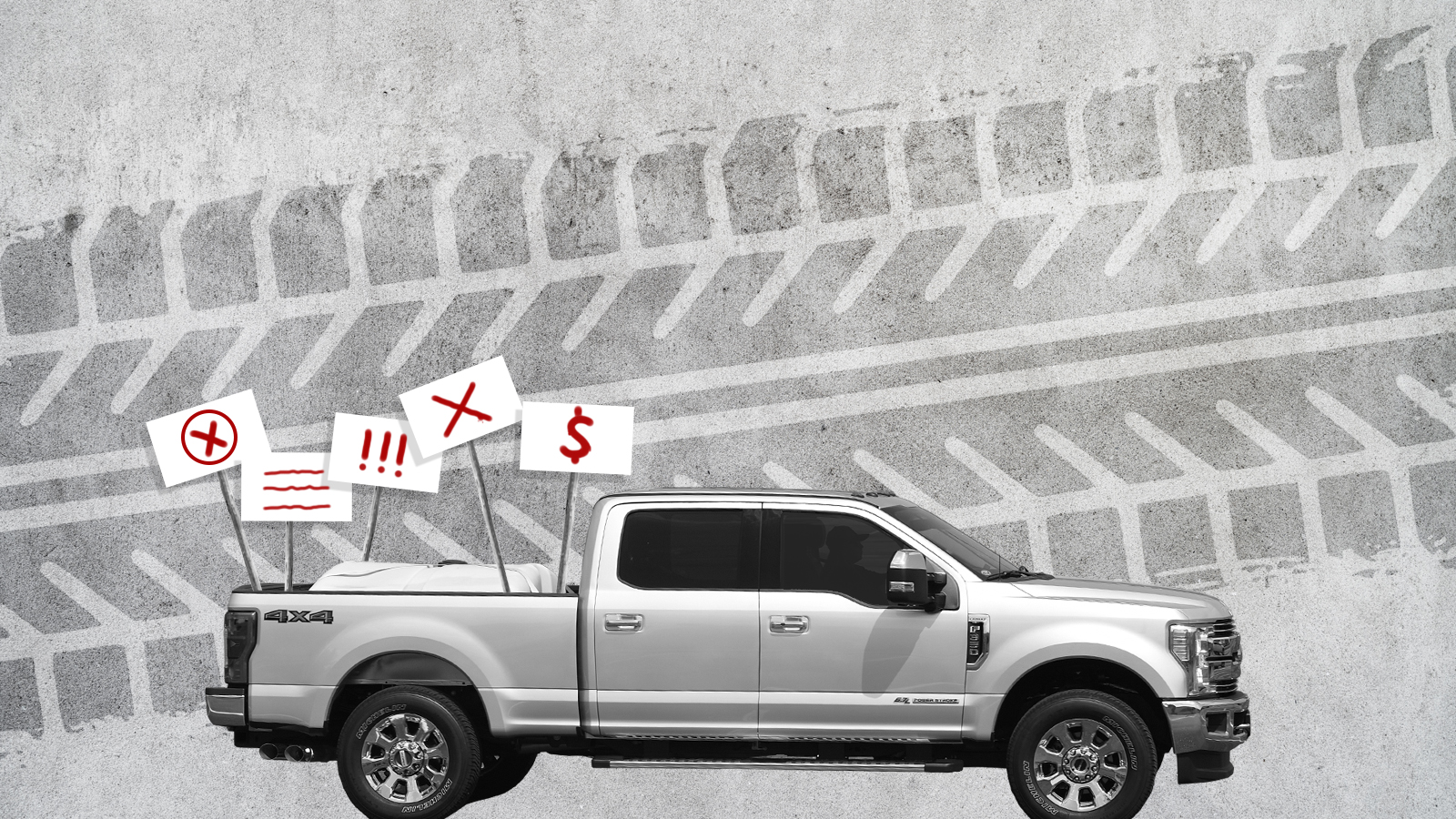A look back at the runaway inflation of the 1970s
The legacy of Paul Volcker lives on


The cost of borrowing money is probably about to go up again. The Federal Reserve is expected to raise interest rates at its July meeting in an effort to rein in stubbornly persistent inflation. "As price increases bedevil consumers at the gas pump and in the grocery aisle, the Fed believes that it needs to bring inflation under control swiftly in order to set the economy on a path toward healthy and sustainable growth," Jeanna Smialek and Jim Tankersley write for The New York Times.
The Fed's moves bring to mind another era of rampant inflation — the 1970s — and the man who eventually brought it under control: Paul Volcker. Under his leadership, the Fed's "tight money" policies triggered a massive recession that pushed the unemployment rate up to 11 percent in 1982. Inflation subsided, but the effort was painful for millions of workers and their families.
Is America on the cusp of a "Volcker moment"? Here's everything you need to know:
The Week
Escape your echo chamber. Get the facts behind the news, plus analysis from multiple perspectives.

Sign up for The Week's Free Newsletters
From our morning news briefing to a weekly Good News Newsletter, get the best of The Week delivered directly to your inbox.
From our morning news briefing to a weekly Good News Newsletter, get the best of The Week delivered directly to your inbox.
What was inflation like in the 1970s?
It was pretty bad — reaching as high as 14 percent by the end of the decade — and it also lasted a long time: The era from 1965 to 1982 was known among economists as "The Great Inflation." You couldn't even escape rising prices by watching your favorite TV show. "Meat prices also spiked. On the popular sitcom All In The Family, Archie Bunker was reduced to eating meatless spaghetti," Scott Horsley wrote last year for NPR. President Nixon was the first to try to battle the problem, with a program of wage and price controls, but that didn't work so well: "When his controls were lifted, prices bounced even higher."
President Gerald Ford was the next to take a swing, and it also turned out badly. His "Whip Inflation Now" program — WIN, get it? — called on Americans to fight inflation by making voluntary personal sacrifices: "To help increase food and lower prices, grow more and waste less. To help save scarce fuel in the energy crisis, drive less, heat less." He even had buttons made. There was some initial enthusiasm, but it didn't really work. "Inflation wasn't something that could be solved by planting a garden or shopping at a thrift store," Stephen Mihm wrote for Bloomberg in December.
Next up: President Jimmy Carter. His term in office ended up with an even worse problem than mere inflation — the era of "stagflation," which happens when prices are rising, but unemployment is high and the economy is growing slowly. Like Nixon, he tried wage and price controls. Like Ford, he asked Americans to use less energy. Like both men, he failed.
But Carter did make one fateful move: In 1979, he appointed Volcker to lead the Fed.
A free daily email with the biggest news stories of the day – and the best features from TheWeek.com
What did Volcker do to fight inflation?
He raised interest rates high — really high, "to an unprecedented 20 percent, drastically reducing the supply of money and credit," Neil Irwin wrote for Volcker's 2019 obituary in The Washington Post. (For comparison's sake, the current Feds Fund Rate is still under 2 percent.) The theory: "If it's more expensive to borrow money or carry a balance on a credit card, consumers will spend less," Rob Wile writes for NBC News. "When spending declines, demand will fall and, eventually, so will the price of everyday goods." The danger, though, is that "the combination of higher borrowing costs, high inflation, and slower growth could tip the U.S. economy into a recession."
That's exactly what happened. Volcker's actions finally brought inflation down — but they also created "the worst economic downturn in the United States since the Great Depression," according to the Federal Reserve's official history. Homebuilders and car manufacturers saw their unemployment rates in their sectors rise to 22 and 24 percent in 1982. And Volcker became massively unpopular: "Angry home builders mailed him sawed-off two-by-fours," Catherine Rampell wrote in 2019. "Lawmakers threatened impeachment. Volcker needed a security detail."
Volcker stuck to his guns. The Fed had periodically raised rates to fight inflation throughout the 1970s, only to back off when unemployment rose. He believed that created a "credibility problem," according to the Fed history: "The new policy was meant to signal to the public that the Fed was serious about low inflation. The expectation of low inflation was important, as current inflation is driven in part by expectations of future inflation." But he also believed that letting inflation run rampant would create "more serious economic circumstances over a much longer period of time." The philosophy? Better to suffer a short-term shock than long-term instability.
Are we about to repeat history?
Not everybody is sure that 2022 looks like the early 1980s. "A large part of the [current] story involves shocks like rising oil and food prices, disrupted supply chains and so on that are outside the control of policymakers," economist Paul Krugman writes in The New York Times. So the shock therapy of that earlier era might be unnecessarily painful. "It doesn't look as if we need harsh, Volcker-type policies that punish the economy until morale improves."
But Volcker's legacy is clearly hovering over the decisions now being made by Jerome Powell, the Fed's current chairman. "We're strongly committed to using our tools to get inflation to come down," Powell said last month. Yes, there's a risk that raising rates could trigger a recession. But "I wouldn't agree that it's the biggest risk to the economy. The bigger mistake to make ... would be to fail to restore price stability." Sounds like old times.
Joel Mathis is a writer with 30 years of newspaper and online journalism experience. His work also regularly appears in National Geographic and The Kansas City Star. His awards include best online commentary at the Online News Association and (twice) at the City and Regional Magazine Association.
-
 The great global copper swindle
The great global copper swindleUnder the Radar Rising prices and easy access makes the metal a ‘more attractive target for criminals looking for a quick profit’
-
 ‘They’re nervous about playing the game’
‘They’re nervous about playing the game’Instant Opinion Opinion, comment and editorials of the day
-
 Will Netanyahu get a pardon?
Will Netanyahu get a pardon?Today's Big Question Opponents say yes, if he steps down
-
 The rise of the world's first trillionaire
The rise of the world's first trillionairein depth When will it happen, and who will it be?
-
 The surge in child labor
The surge in child laborThe Explainer A growing number of companies in the U.S. are illegally hiring children — and putting them to work in dangerous jobs.
-
 Your new car may be a 'privacy nightmare on wheels'
Your new car may be a 'privacy nightmare on wheels'Speed Read New cars come with helpful bells and whistles, but also cameras, microphones and sensors that are reporting on everything you do
-
 Empty office buildings are blank slates to improve cities
Empty office buildings are blank slates to improve citiesSpeed Read The pandemic kept people home and now city buildings are vacant
-
 Why auto workers are on the brink of striking
Why auto workers are on the brink of strikingSpeed Read As the industry transitions to EVs, union workers ask for a pay raise and a shorter workweek
-
 American wealth disparity by the numbers
American wealth disparity by the numbersThe Explainer The gap between rich and poor continues to widen in the United States
-
 Cheap cars get run off the road
Cheap cars get run off the roadSpeed Read Why automakers are shedding small cars for SUVs, and what that means for buyers
-
 Vietnamese EV maker VinFast wows with staggering Nasdaq debut
Vietnamese EV maker VinFast wows with staggering Nasdaq debutSpeed Read Can the company keep up the pace, or is it running out of gas?
